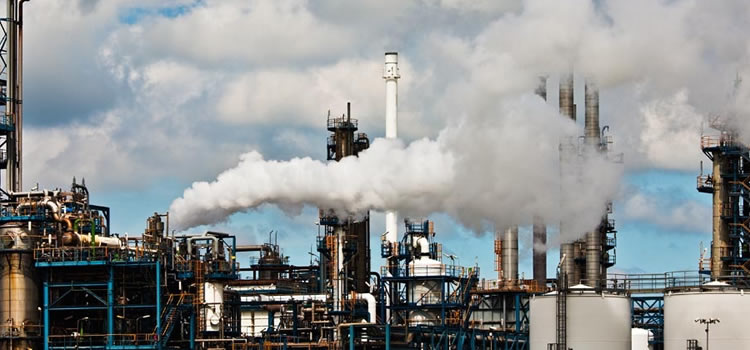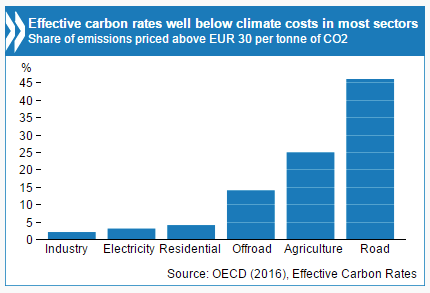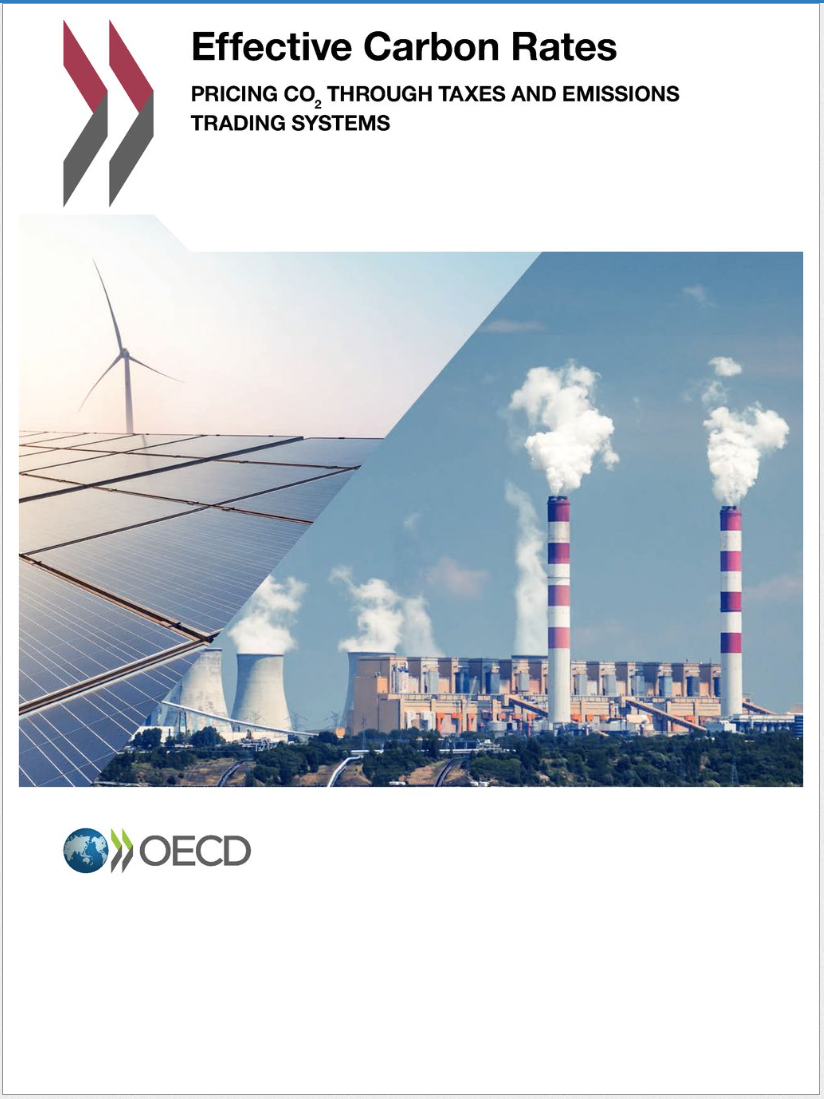CO2 uitstoten kost meestal nog steeds weinig of niks

27 september 2016 – ‘Het uitstoten van broeikasgassen is in veel gevallen bijna gratis. En als het al wat kost, is de prijs veel te laag om bedrijven een prikkel te geven hun uitstoot terug te dringen.’ Zo vat de NRC het gisteren verschenen OECD-rapport samen over ‘Effective Carbon Rates’.
Uit het bericht van de NRC
‘(…) De OESO onderschrijft [het] principe, dat ervan uitgaat dat de vervuiler betaalt, en noemt betalen voor emissies „een van de meest effectieve gereedschappen om de uitstoot te reduceren”.
In de 41 landen die in het onderzoek aan bod komen (behalve de lidstaten ook opkomende landen als China, India, Brazilië en Zuid-Afrika) is 60 procent van alle CO2-uitstoot niet geprijsd. En van de emissies waarvoor wel betaald moet worden, ligt de prijs meestal ver onder de 30 euro per ton. Dat bedrag van 30 euro is volgens de OESO in de meest conservatieve schatting minimaal nodig om de schade door de opwarming te compenseren. Vaak zitten koolstofkosten bovendien verstopt in accijnzen, waardoor ze voor bedrijven geen prikkel vormen om over te stappen op schonere vormen van energie.
Ook al zien de meeste betrokkenen de noodzaak van een koolstofprijs, toch slaagden ze er in Parijs niet in daarover concrete afspraken te maken. Een belangrijke reden is dat landen vrezen voor hun concurrentiepositie, als een koolstofprijs niet overal min of meer gelijk is. (…) De OESO pleit voor flexibiliteit, en heeft daarom een voorkeur voor een prijs die tot stand komt via emissiehandel, in plaats van een belasting. Maar in de Europese Unie, waar emissiehandel al ruim tien jaar bestaat, is de prijs zo laag (onder de 5 euro per ton) dat die helemaal niet werkt. (…)’

Uit een persbericht van de OECD
‘(…) Current carbon prices are falling short of the levels needed to reduce greenhouse gas emissions driving climate change, but even moderate price increases could have a significant impact, according to new OECD research. Effective Carbon Rates: Pricing CO2 through taxes and emissions trading systems presents new data on effective carbon rates on CO2-emissions for energy use across 6 economic sectors in 41 countries – 34 OECD member countries and 7 partner economies: Argentina, Brazil, China, India, Indonesia, Russia and South Africa. The report finds that there is a major gap between current carbon pricing policies and what is needed to ensure that carbon is priced even at the lower-end estimate of real climate costs – EUR 30 per tonne of CO2.
 The effective carbon rate (ECR) is the sum of specific taxes on energy use, carbon taxes and prices of tradable emissions permits, where these apply. Taxes are included on the basis of their economic effects rather than their stated policy intent, meaning that excise taxes are part of the ECR.
The effective carbon rate (ECR) is the sum of specific taxes on energy use, carbon taxes and prices of tradable emissions permits, where these apply. Taxes are included on the basis of their economic effects rather than their stated policy intent, meaning that excise taxes are part of the ECR.
Across all sectors and countries, the average effective carbon rate (ECR) amounts to just EUR 14.4 per tonne of CO2, of which 93.1% are excise taxes, 1.3% are carbon taxes, and 5.6% are emissions trading systems.
Going beyond average rates, the report introduces a new indicator – the carbon pricing gap – which measures the extent to which ECRs per unit of emissions fall short of pricing emissions at the low-end estimate of the cost of carbon. The indicator first considers, for each tonne of emissions, the difference between the price it actually faces and EUR 30 per tonne of CO2; second, it aggregates these gaps for all units of emissions priced at less than EUR 30 per tonne, and compares this to the counterfactual case where all emissions would be priced at EUR 30 per tonne. The result is the carbon pricing gap, expressed as a percentage. The current carbon pricing gap is 80.1% across the 41 countries surveyed.
The report also calculates the indicator for a scenario under which carbon rates and sectoral coverage are increased to the level of the median country rate and coverage in each economic sector. In this case, if all countries matched the efforts being achieved by the upper half of countries surveyed, the carbon pricing gap drops from 80.1% to 53.1%.
“This new data shows that even moderate collective action to increase carbon prices can make a significant impact in putting countries on a pathway to a low carbon transition,” said OECD Secretary-General Angel Gurría. “Pricing carbon, through taxes or emissions trading systems, is one of the most effective tools for reducing CO2 emissions and tackling climate change. Prices can and do trigger reductions of energy use, improvements in energy efficiency and a shift towards cleaner forms of energy. The challenge is in getting the prices right,” Mr Gurría said. (…)’
NRC, 27 september 2016: Bijna niemand betaalt voor de uitstoot van CO2 (via Blendle)
OECD, rapport, 26 september 2016: Effective Carbon Rates (pdf, online-versie, 174 pag.)
OECD, executive summary, 26 september 2016: Effective Carbon Rates (pdf, 4 pag.)
Foto: FluxEnergie/© Paul Tolenaar



